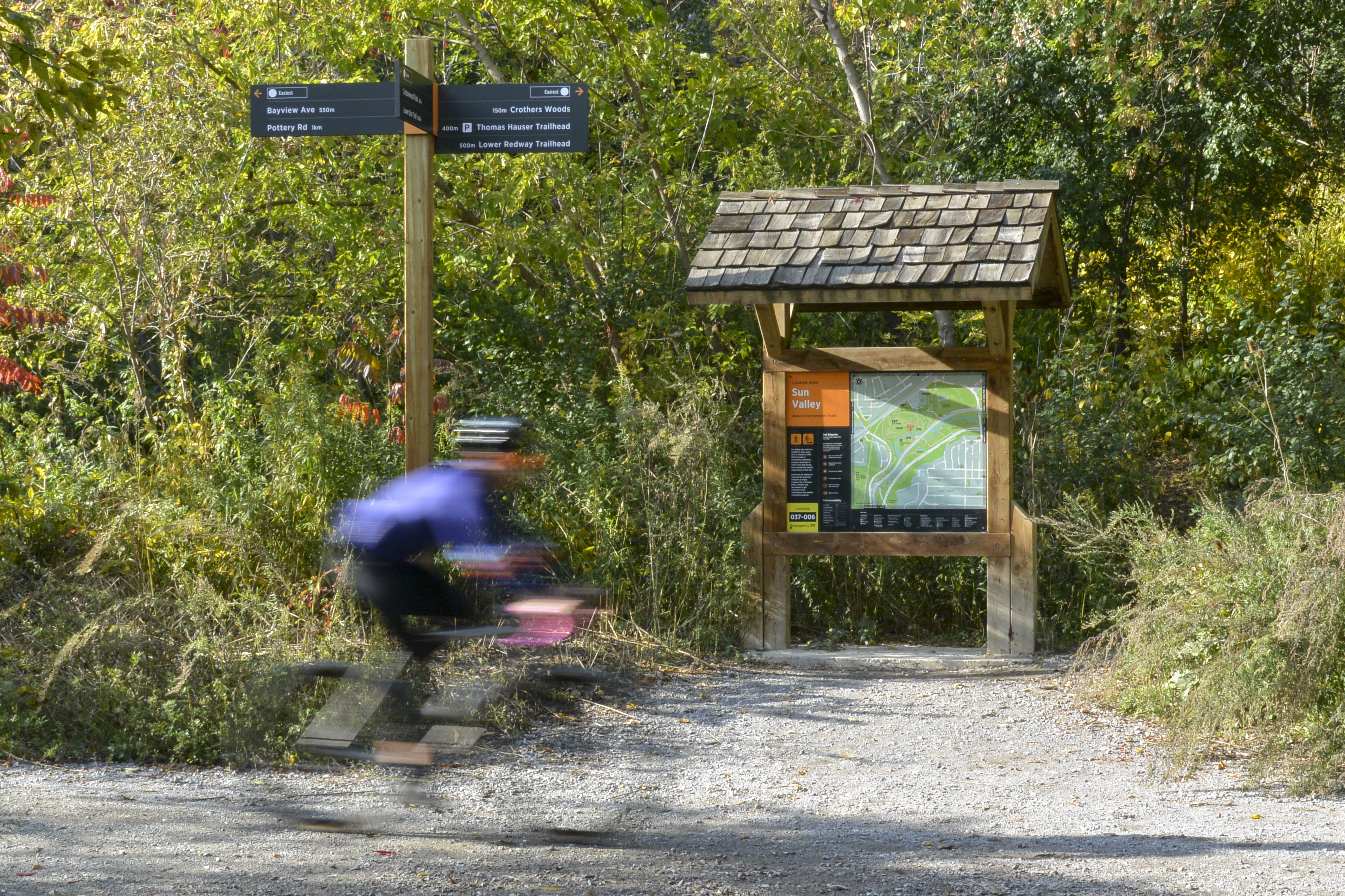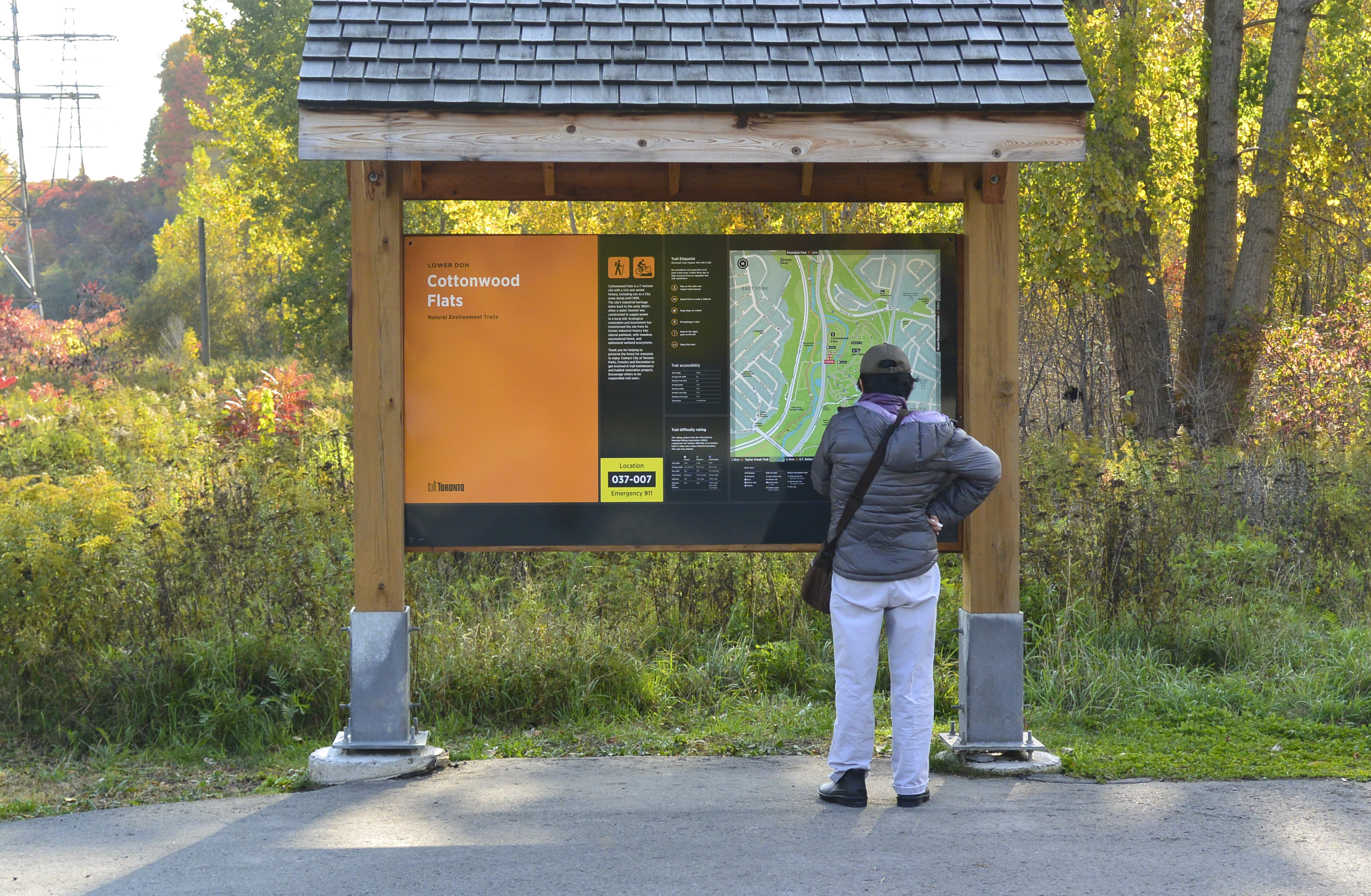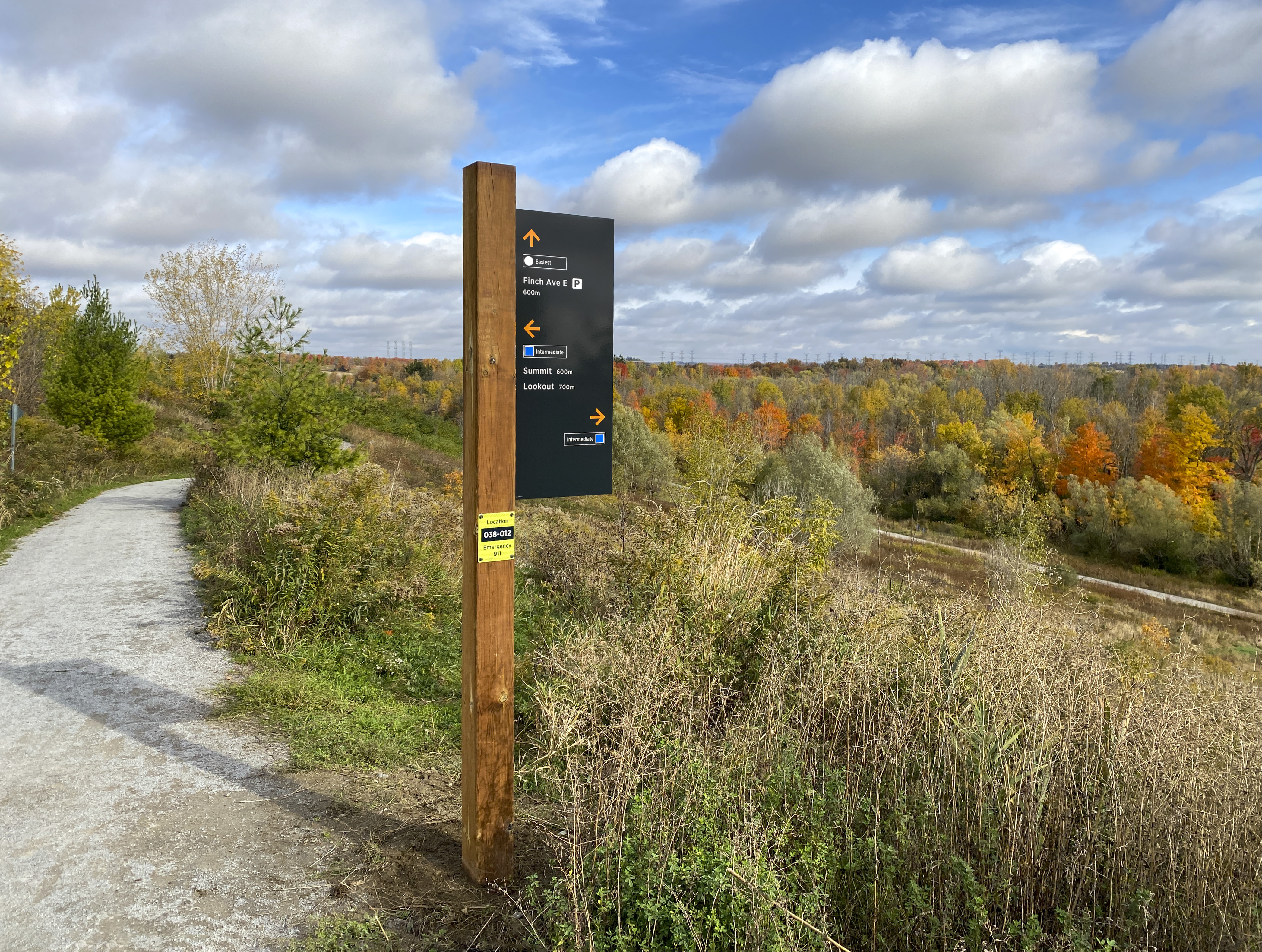Supporting well-being with signage: lessons from Steer’s Toronto Natural Environment Trails wayfinding project
On Oct 3, Principal Consultant David Kopulos presents 'Building through partnerships' at World Trails Conference, Ottawa.

On October 3, our Principal Consultant David Kopulos will present in the session ‘Building through partnerships: A trail map to generating community support to maintain and improve trails’ at the World Trails Conference, Ottawa. Below is a preview of what his talk is about.
The mental and physical well-being benefits of being in nature are well-known and were never clearer than during 2020’s pandemic lockdowns. In Toronto, residents by the thousands took to the city’s recreational trails that weave through its stunning natural ravines.
This increased trail usage brought with it new pressures on the environment, greater expectations for information on the trail, and increased conflict between user groups.
The City’s Urban Forestry team, who had already commissioned Steer to pilot a new wayfinding system on two trails, challenged us to answer the question: could trail signage accommodate the needs of folks who had never visited a trail before while satisfying the expectations of long-time trail users?
We quickly found that a one-size-fits-all approach couldn’t meet everyone’s needs. The solution was to integrate parallel approaches: for accessibility, combine a simple familiar trail difficulty rating scale (with symbols borrowed from the International Mountain Biking Association) with a full technical listing of each trail’s accessibility features for those who require it. To safely separate fast-moving bikers from casual hikers, traffic-style signage is integrated with directions for pedestrians. One system combines a variety of information and speaks with multiple voices.

Using high-contrast text and clear language, trail signs guide users to notable features within the trail network, orient users to trail exits and nearby destinations, and encourage users to stay on official trails to reduce impacts on the ecosystem. Signs are also integrated with the city’s on-street, transit and cycling wayfinding programmes, resulting in an integrated network that includes natural trails as connecting routes, not just recreational destinations.
We tested the system at a one-day pop-up event, where trail users were invited to follow a route and provide feedback on prototype signs. The insights they provided — about messages that were unclear, text that was too small, and signs that weren’t located where they were expected — were incorporated into the final plan and demonstrated the value of engaging the community.

The wayfinding pilots, now installed at Crothers Woods and Beare Hill Park, combine wayfinding, site interpretation, trail rules and etiquette, and emergency safety instructions into a simple, durable and cost-effective system of panels mounted to timber posts.
The result is an integrated information system that gives trail users the confidence to enjoy the trails no matter their level of familiarity or expertise. It reassures first-time users that the trail is a safe place to explore without the fear of being lost. For bikers and hikers who visit regularly, the system provides reassurance that the City is committed to maintaining the trail and ensuring a safe experience.

The lessons from this pilot will inform implementations on other trails in the city, establishing a consistent and predictable standard for wayfinding in natural environments. Alongside other outreach and engagement programs, Toronto’s Natural Environment Trails wayfinding system is a literal stake in the ground that confirms the City’s commitment to fostering responsible use of its natural assets.



